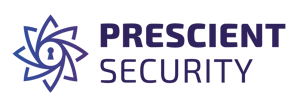Data Sheets
Streamlining Open Source Compliance and Security
Detailed infographics, industry trends, and deep dives into security strategy to add to your arsenal of actionable cybersecurity and compliance insights. Designed to illustrate critical security and compliance takeaways to guide cybersecurity strategy.


Data Sheets
Streamlining Open Source Compliance and Security
Detailed infographics, industry trends, and deep dives into security strategy to add to your arsenal of actionable cybersecurity and compliance insights. Designed to illustrate critical security and compliance takeaways to guide cybersecurity strategy.
In-depth Cybersecurity Analysis
Curated to Empower Decision-Making and Enhance Your Understanding of Digital Security
Welcome to the Prescient Security Data Sheets page, your hub for the latest insights, detailed infographics, and trending conversation in cybersecurity and compliance.

Everything ISO
As cyberattacks increase, organizations must adopt proactive strategies to protect their digital assets. Check out our Exploring ISO Data Sheet to discern which ISO framework is right for you and your security and compliance strategy.
Three W's of ISO 42001
In the advent of AI, familiarize yourself with the first-ever AI-related ISO standard, providing organizations with the framework to safeguard from future threats, regulatory risks, apprehension from future investors, and the ability to take risks and scale responsibly.
Key Components of SOC 1
SOC 1 audits are pivotal for organizations that require rigorous oversight of financial controls. Understand the key components of SOC 1, the certification process, and other variables that determine when an organization should solicit a SOC 1 audit.
Key Components of HITRUST
HITRUST certifications enable organizations to fortify their security posture against sophisticated cyber threats and streamline compliance processes across various regulations, including HIPAA, SOC, and ISO. Understand the benefits and key components of HITRUST e1, i1, and r2 certifications, when to solicit each, and when they should be included in your organizations cybersecurity strategy.
Exploring NIST CSF, 800-171, and 800-53
NIST CSF, 800-171, and 800-53 are three frameworks crucial to risk management, information security and privacy, safeguarding sensitive information on federal contractors' IT systems and networks, and enabling federal information systems and organizations to help meet the Federal Information Security Management Act (FISMA) requirements. Understand the key components of these frameworks and when to solicit each.
Cybersecurity Maturity Model Certification (CMMC) Overview
Understand the key definitions of CMMC, the benefits, and the levels, requirements, and assessments necessary to comply with the DoD and DoD security requirements and contracts.
Client Spotlight: Noibu
Dive into Noibu's engagement, aspirations, and success with Prescient Security, and the PCI and SOC strategy used to facilitate it.
Considering CSA STAR
The CSA Security, Trust, Assurance, and Risk (STAR) Program is the largest and most complete cloud assurance program in the world enabling organizations to assess and manage the security risks of cloud services. Dive into the levels, features, and registry of CSA STAR and decide whether it should be a consideration for your organization.
FedRAMP & Pursuing a FedRAMP Agency Authorization
Understand the key considerations of FedRAMP, including the 4.0 FedRAMP designations, agency authorization process, and strategic opportunities organizations are afforded when becoming FedRAMP certified.
Handling HIPAA
Dive into HIPAA and the Privacy Rule Vs. Security rule, the HIPAA certification process, who needs a HIPAA audit, the 7 areas of HIPAA compliance, and why HIPAA is vital for any organization handling protected health information (PHI).
How To Stay Cyber Safe During Phishing Season
Stay up to date with the latest phishing and social engineering scams to protect your peers, yourself, and your organization.
Guard with GDPR
Understand the rules and regulations of GDPR, who it applies to, and how it can be an asset for your organization.
Highlighting HITRUST
Founded to safeguard information in the healthcare industry, HITRUST has since expanded to the finance, government, and technology sectors. Learn about HITRUST's leading framework (HITRUST CSF) and how it can be implemented into your security strategy.
In-depth Cybersecurity Analysis
Curated to Empower Decision-Making and Enhance Your Understanding of Digital Security
Welcome to the Prescient Security Data Sheets page, your hub for the latest insights, detailed infographics, and trending conversation in cybersecurity and compliance.

Everything ISO
As cyberattacks increase, organizations must adopt proactive strategies to protect their digital assets. Check out our Exploring ISO Data Sheet to discern which ISO framework is right for you and your security and compliance strategy.
Three W's of ISO 42001
In the advent of AI, familiarize yourself with the first-ever AI-related ISO standard, providing organizations with the framework to safeguard from future threats, regulatory risks, apprehension from future investors, and the ability to take risks and scale responsibly.
Everything ISO
As cyberattacks increase, organizations must adopt proactive strategies to protect their digital assets. Check out our Exploring ISO Data Sheet to discern which ISO framework is right for you and your security and compliance strategy.
Three W's of ISO 42001
In the advent of AI, familiarize yourself with the first-ever AI-related ISO standard, providing organizations with the framework to safeguard from future threats, regulatory risks, apprehension from future investors, and the ability to take risks and scale responsibly.
Key Components of SOC 1
SOC 1 audits are pivotal for organizations that require rigorous oversight of financial controls. Understand the key components of SOC 1, the certification process, and other variables that determine when an organization should solicit a SOC 1 audit.
Key Components of HITRUST
HITRUST certifications enable organizations to fortify their security posture against sophisticated cyber threats and streamline compliance processes across various regulations, including HIPAA, SOC, and ISO. Understand the benefits and key components of HITRUST e1, i1, and r2 certifications, when to solicit each, and when they should be included in your organizations cybersecurity strategy.
Exploring NIST CSF, 800-171, and 800-53
NIST CSF, 800-171, and 800-53 are three frameworks crucial to risk management, information security and privacy, safeguarding sensitive information on federal contractors' IT systems and networks, and enabling federal information systems and organizations to help meet the Federal Information Security Management Act (FISMA) requirements. Understand the key components of these frameworks and when to solicit each.
Cybersecurity Maturity Model Certification (CMMC) Overview
Understand the key definitions of CMMC, the benefits, and the levels, requirements, and assessments necessary to comply with the DoD and DoD security requirements and contracts.
Client Spotlight: Noibu
Dive into Noibu's engagement, aspirations, and success with Prescient Security, and the PCI and SOC strategy used to facilitate it.
Considering CSA STAR
The CSA Security, Trust, Assurance, and Risk (STAR) Program is the largest and most complete cloud assurance program in the world enabling organizations to assess and manage the security risks of cloud services. Dive into the levels, features, and registry of CSA STAR and decide whether it should be a consideration for your organization.
FedRAMP & Pursuing a FedRAMP Agency Authorization
Understand the key considerations of FedRAMP, including the 4.0 FedRAMP designations, agency authorization process, and strategic opportunities organizations are afforded when becoming FedRAMP certified.
Handling HIPAA
Dive into HIPAA and the Privacy Rule Vs. Security rule, the HIPAA certification process, who needs a HIPAA audit, the 7 areas of HIPAA compliance, and why HIPAA is vital for any organization handling protected health information (PHI).
How To Stay Cyber Safe During Phishing Season
Stay up to date with the latest phishing and social engineering scams to protect your peers, yourself, and your organization.
Guard with GDPR
Understand the rules and regulations of GDPR, who it applies to, and how it can be an asset for your organization.
Highlighting HITRUST
Founded to safeguard information in the healthcare industry, HITRUST has since expanded to the finance, government, and technology sectors. Learn about HITRUST's leading framework (HITRUST CSF) and how it can be implemented into your security strategy.
In-depth Cybersecurity Analysis
Curated to Empower Decision-Making and Enhance Your Understanding of Digital Security
Welcome to the Prescient Security Data Sheets page, your hub for the latest insights, detailed infographics, and trending conversation in cybersecurity and compliance.

Leadership
Audit Data Sheets
Key Components of SOC 1
SOC 1 audits are pivotal for organizations that require rigorous oversight of financial controls. Understand the key components of SOC 1, the certification process, and other variables that determine when an organization should solicit a SOC 1 audit.
Highlighting HITRUST
Founded to safeguard information in the healthcare industry, HITRUST has since expanded to the finance, government, and technology sectors. Learn about HITRUST's leading framework (HITRUST CSF) and how it can be implemented into your security strategy.
Client Spotlight: Noibu
Dive into Noibu's engagement, aspirations, and success with Prescient Security, and the PCI and SOC strategy used to facilitate it.
Key Components of HITRUST
HITRUST certifications enable organizations to fortify their security posture against sophisticated cyber threats and streamline compliance processes across various regulations, including HIPAA, SOC, and ISO. Understand the benefits and key components of HITRUST e1, i1, and r2 certifications, when to solicit each, and when they should be included in your organizations cybersecurity strategy.
SOC 2 Digital Trust Accelerator (DTA)
Understand our SOC 2 bootcamp style accelerator that takes customers through SOC 2 compliance in just four weeks. By the end, organizations are SOC 2 Type 1 compliance and ready to start their Type 2 observation period.
Pen Test Data Sheets
Penetration Testing with Prescient Security
Understand our full list of penetration testing and security assessment services, and which can be applied to maximize your security posture today.
Benefits of Cloud Penetration Testing
Explore the vital compliance and data protection, enhanced security and risk mitigation, and operational and business advantages of cloud penetration testing.
ISO Data Sheets
Everything ISO
As cyberattacks increase, organizations must adopt proactive strategies to protect their digital assets. Check out our Exploring ISO Data Sheet to discern which ISO framework is right for you and your security and compliance strategy.
Three W's of ISO 42001
In the advent of AI, familiarize yourself with the first-ever AI-related ISO standard, providing organizations with the framework to safeguard from future threats, regulatory risks, apprehension from future investors, and the ability to take risks and scale responsibly.
Security Data Sheets
How To Stay Cyber Safe During Phishing Season
Stay up to date with the latest phishing and social engineering scams to protect your peers, yourself, and your organization.
Considering CSA STAR
The CSA Security, Trust, Assurance, and Risk (STAR) Program is the largest and most complete cloud assurance program in the world enabling organizations to assess and manage the security risks of cloud services. Dive into the levels, features, and registry of CSA STAR and decide whether it should be a consideration for your organization.
The Cacilian and Vanta Advantage
Learn about the Cacilian and Vanta Advantage and the efficiency, functionality, and practicality that makes this integration unique and invaluable.
Federal Data Sheets
FedRAMP & Pursuing a FedRAMP Agency Authorization
Understand the key considerations of FedRAMP, including the 4.0 FedRAMP designations, agency authorization process, and strategic opportunities organizations are afforded when becoming FedRAMP certified.
Cybersecurity Maturity Model Certification (CMMC) Overview
Understand the key definitions of CMMC, the benefits, and the levels, requirements, and assessments necessary to comply with the DoD and DoD security requirements and contracts.
Exploring NIST CSF, 800-171, and 800-53
NIST CSF, 800-171, and 800-53 are three frameworks crucial to risk management, information security and privacy, safeguarding sensitive information on federal contractors' IT systems and networks, and enabling federal information systems and organizations to help meet the Federal Information Security Management Act (FISMA) requirements. Understand the key components of these frameworks and when to solicit each.
Privacy Data Sheets
Handling HIPAA
Dive into HIPAA and the Privacy Rule Vs. Security rule, the HIPAA certification process, who needs a HIPAA audit, the 7 areas of HIPAA compliance, and why HIPAA is vital for any organization handling protected health information (PHI).
Guard with GDPR
Understand the rules and regulations of GDPR, who it applies to, and how it can be an asset for your organization.
In-depth Cybersecurity Analysis
Curated to Empower Decision-Making and Enhance Your Understanding of Digital Security
Welcome to the Prescient Security Data Sheets page, your hub for the latest insights, detailed infographics, and trending conversation in cybersecurity and compliance.

Everything ISO
As cyberattacks increase, organizations must adopt proactive strategies to protect their digital assets. Check out our Exploring ISO Data Sheet to discern which ISO framework is right for you and your security and compliance strategy.
Three W's of ISO 42001
In the advent of AI, familiarize yourself with the first-ever AI-related ISO standard, providing organizations with the framework to safeguard from future threats, regulatory risks, apprehension from future investors, and the ability to take risks and scale responsibly.
Key Components of SOC 1
SOC 1 audits are pivotal for organizations that require rigorous oversight of financial controls. Understand the key components of SOC 1, the certification process, and other variables that determine when an organization should solicit a SOC 1 audit.
Key Components of HITRUST
HITRUST certifications enable organizations to fortify their security posture against sophisticated cyber threats and streamline compliance processes across various regulations, including HIPAA, SOC, and ISO. Understand the benefits and key components of HITRUST e1, i1, and r2 certifications, when to solicit each, and when they should be included in your organizations cybersecurity strategy.
Exploring NIST CSF, 800-171, and 800-53
NIST CSF, 800-171, and 800-53 are three frameworks crucial to risk management, information security and privacy, safeguarding sensitive information on federal contractors' IT systems and networks, and enabling federal information systems and organizations to help meet the Federal Information Security Management Act (FISMA) requirements. Understand the key components of these frameworks and when to solicit each.
Cybersecurity Maturity Model Certification (CMMC) Overview
Understand the key definitions of CMMC, the benefits, and the levels, requirements, and assessments necessary to comply with the DoD and DoD security requirements and contracts.
Client Spotlight: Noibu
Dive into Noibu's engagement, aspirations, and success with Prescient Security, and the PCI and SOC strategy used to facilitate it.
Considering CSA STAR
The CSA Security, Trust, Assurance, and Risk (STAR) Program is the largest and most complete cloud assurance program in the world enabling organizations to assess and manage the security risks of cloud services. Dive into the levels, features, and registry of CSA STAR and decide whether it should be a consideration for your organization.
FedRAMP & Pursuing a FedRAMP Agency Authorization
Understand the key considerations of FedRAMP, including the 4.0 FedRAMP designations, agency authorization process, and strategic opportunities organizations are afforded when becoming FedRAMP certified.
Handling HIPAA
Dive into HIPAA and the Privacy Rule Vs. Security rule, the HIPAA certification process, who needs a HIPAA audit, the 7 areas of HIPAA compliance, and why HIPAA is vital for any organization handling protected health information (PHI).
How To Stay Cyber Safe During Phishing Season
Stay up to date with the latest phishing and social engineering scams to protect your peers, yourself, and your organization.
Guard with GDPR
Understand the rules and regulations of GDPR, who it applies to, and how it can be an asset for your organization.
Highlighting HITRUST
Founded to safeguard information in the healthcare industry, HITRUST has since expanded to the finance, government, and technology sectors. Learn about HITRUST's leading framework (HITRUST CSF) and how it can be implemented into your security strategy.
